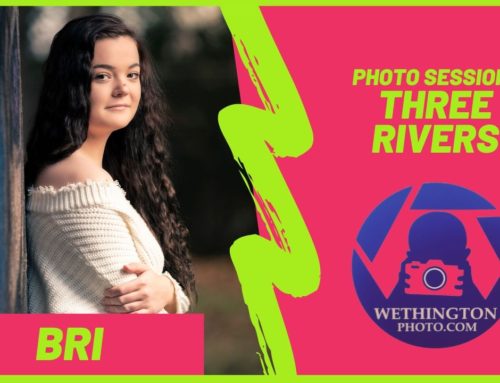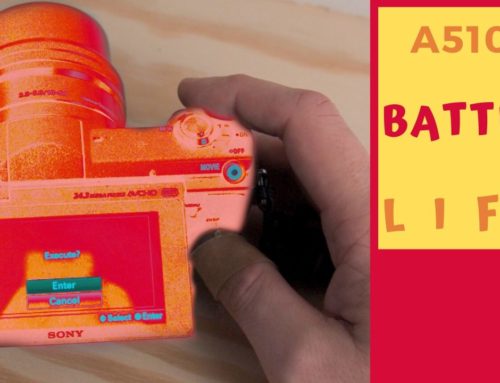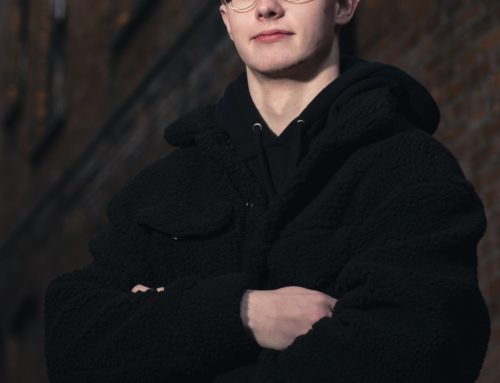Instax: how to take good pictures with Instax cameras
How do you take good pictures with Instax cameras?
I got my first Instax camera a few months ago. It is the Instax Mini 90 Neo Classic. It has been a unique experience. I’ve always been a digital photographer, but I’ve always wanted to try film or instant photography.
The barrier of entry is pretty high for film photography. With instant photography that isn’t the case. As much anyway.
If you’re looking to try a new form of photography, or simply want to know how to take better photos with your Instax camera.
My name is David. I’m a portrait photographer with Wethington Photo based out of Kalamazoo, MI, and I’ve created a list of my top twenty tips on getting better pictures with your Instax camera!
My top tips:
1. Fill the frame
If you’re new to photography the tip of filling the frame might not seem as important as not forgetting to take the lens cap off.
If you practice filling the frame with your subject you will get better photos.
It’s something that every photographer goes through. We start taking pictures, and we’re focused on our subjects. Which is a good thing. Getting a good picture at the right time is a skill in itself.
The problem we run into is that we don’t pay attention to where the frame of the photo is. We will leave ⅓ of the frame full of empty dead space. It serves no purpose. It doesn’t add to the location, or drama of the photo and the subject at all. The only thing it does is make what could be a good photo a little less impactful.
2.

2. Crouch down for kids
Another tip that is in line with filling the frame is getting on the same plane as your subject. This is especially notable for taking photographs of our kids.
It is natural for our eyes to look at others in their eyes. We see everything at eye level. In day to day life if we are speaking with someone a little taller than us we tend to stand up straighter, even getting on our tippy toes just to get a better vantage point. In a similar way when we’re speaking with our kids we will sit down or crouch down to get at their level.
This brings us to the same eye level. When we take a photograph, and capture that split second forever in Instax film we will get better results from our photos by taking ONE MORE split second and taking a knee.
I promise, this alone, will leave you being much more happier with your photos. Looking at our kids in the eyes instead of the top of their heads is a step in the right direction for better photos.
3. Use a step stool for taller friends
In a similar though as kneeling down to take photos of our kids using a stool to stand on for our taller friends is another tip for taking better photos.
We love seeing people at eye level. We love seeing photos of people at eye level. Imagine having spent the time to get a good photo of a friend a little taller than ourselves. With Instax we have to earn the photo as well, so we earned this great photo. And we are looking up their chin, and nostrils. It could make for a great laugh, but not a good photo!
If you don’t think this is so Google search some portraits of Shaquille O’neal. I can bet that over 90% of the portraits are at eye level. The other 10% are showing the great size difference between Shaq, and another person. Which is my next tip!
4. Get your angle right for subjects
We’ve considered crouching for kids, and using a stool for the taller people in our lives. But, what if we want to show that our 3 year old son is only 2 feet shorter than dad?
Easy, show both in comparison to each other. The back to back photo might be cheesy, but it is a favorite for most families. I know with my family we keep a measure on how far he is from 48” which is roller coaster height!! I love roller coasters!
If you want to add a little twist to this angle you can try to exaggerate it a little. Using the cameras limitations with depth perception to our advantage.
Try having your smaller subject stand closer to the lens, and the taller subject in the background. Being closer to the Instax camera the smaller subject will appear larger than life. Although, not necessarily taller than Dad.
Getting the angel right applies to almost everything. Architecture, planes, hot air balloons. There are things in our everyday life that are meant to be viewed from a down to up perspective.
To make sure that we are getting the right angle we need to take a few different shots. A lot of photographers get in the bad habit of taking the same photo from the same spot. Without changing settings or anything. Just more pictures of the same things.
Take your first photo. If the exposure is decnet move onto another photo from a different spot. Either crouch, or step up, and then move to another spot. With practice you’ll get the hang of the experimenting.

5. Take your time
Listen we have Fujifilm Instax film. We are not shooting digital here. Every time we press the shutter button we literally use an equivalent of some form of monetary value.
In bulk Instax Mini film is around $1.00 a sheet. Not terrible, but not as cheap as the camera in our phones in our pocket either. Take your time!!!
With shooting Instant photography there’s a certain risk reward level of enjoyment. “We have to earn it”- To quote Robert Hamm. Earring it is part of the fun.
A quick run through before we press the shutter can save us a lot of film sheets.
The quick list I go through is:
- If i can touch the subject then I’m in macro mode
- Is my framing and composition good
- Is it dark I have to use flash
- Is it too bright take subject to shade or use darken scene mode
This is just a quick list. But, if we can keep these basics in mind we’ll be well on our way to some good instant photos.
6. Don’t be afraid of a bad shot. Be willing to experiment
With the above tip in mind we also need to remember the importance of missing an opportunity can have on our learning.
We all take bad shots. Ever since Ansel Adams, and all the way to Tommy Reynolds the very best photographers take bad photos. This is 100% the case. No exceptions.

If you find someone who says they’ve never taken a bad photo I’ll show the same person with a broken delete key on their keyboard. It’s just one of those things. It happens.
When we take a bad photograph it’s a good thing. As long as we can see what we did or didn’t do to make it a bad instant photo we can get better. The more we take the better we get.
Don’t be afraid to take a bad photo!!
7. Break the ice
Instant photos can be awesome for breaking the ice. If you’re a wedding photographer, or street photographer using your Instax camera to break the ice can really help pave the way to good conversations.
Everyone understands what an instant photo is. And, there’s a universal joy that comes from watching them develop and come to life. If we’re just looking to get out of our comfort zone, and meet some new people taking a quick instant photo and giving it to them can really help.
If the person doesn not know what an instant photo is. Well, you are in a very unique spot to let them experience it for the very first time! How cool is that?
This doesn’t have to be limited to photos of individuals either. If you’re at the zoo, or museum and you take a good photo show the person of the kids next to you.
Which takes us to my next tip…
8. Share the photos
I know Instax film is not the cheapest hobby to be into. However, photography is an art medium that in my opinion is meant to be shared.
Taking a good portrait of somebody and giving that person the photo is giving them something that they’re not likely to forget anytime soon.
Using the example of the museum or zoo above. Imagine sharing a cool photo of an animal or exhibit with a young one. Giving them that instant photo might very well be securing a very fond memory in their life. To make that memory and experience even more impactful try taking a family photo for someone, and then giving them the picture.
You will be experiencing the joy that comes from sharing our loved instant film hobby. Even if it isn’t as cheap as collecting rocks!
9. Use natural light
One of the simplest beauties in world is natural light. Most of the Instax cameras are equipped with flash. These are direct flash. Direct flash is widely considered the least flattering light used.
When we see beautiful portraits of beautiful light. Our eyes are not lying to us. We love seeing good light. Direct flash leaves no shadows or depth in the subjects. It’s much better to use natural light. The photo might be a little underexposed, but the photo might have a little more character than direct flash create.
All photographers love great light. From Instant film photographers to digital photographers we love great light.
I’m talking of course about the golden hour that all photographers aim to photograph in. But, I’m also talking about the diffused look that taking our subject into the shade, or having them turn their back to the sun to avoid harsh shadows on their face.
Shooting with golden hours for portraits, or moving into the shade will tremendously help our photos.
As much as possible we should use natural light while shooting Instax cameras. There will of course be situations that we have to resort to flash, but if we can try the natural light first we will be happier with our results.
10. Modify flash
When we are obligated to use flash for portraits we should try to diffuse our flash.
This is a little odd for an Instax camera. I understand. The flash is literally attached to the camera. And, in some Instax cameras the flash can’t even be shut off.
There are some affordable diffusers available. Many of these are small enough or squishable enough to fit in most camera bags. Even a bag for an Instax camera.
Using one of these diffusers simply by placing them between the flash and the subject will soften the light tremendously. This will greatly increase the quality of your photos.
11. Get closer than you think
Another tip I have for better Instant photos. Especially Instax Mini film is to get closer than you think necessary.
When we’re shooting Instant film we need to keep in mind that there is no pinch and zoom feature with our film photos. We need to make sure we can properly display our photos, and subjects.
Getting closer to our subject whether it’s our child, a car, or landscape we need to make sure that we are getting closer than we think we need to.
There’s a certain level of regret that comes with realizing that our frame is only ⅛ filled with what we were actually tried to photograph.
If we’re shooting Instax Mini film this is crazy important. The Mini film is already on the smaller size. If we leave our subject tiny in the smallest instant film available we will regret it.
12. Use macro for portraits also
In line with getting closer than we think necessary we also need to use the macro mode more than we think is needed.
The macro mode is identified with the flower symbol. I remember when I started getting into photography I thought this was for taking pictures of …. Well, flowers. This is not the case.
The macro mode simply changes our focal plain. Think of your Instant camera lens as your eyes. Our eyes can only focus at certain distances. If we want to see something far away we need binoculars. If we need to see something tiny we use a magnifying glass.
The camera lense is similar. It can only focus at certain distances. Each lens has a different focus distance. Our Instax cameras can focus at about 6 feet. At 6 feet and closer it needs to be in macro mode. At about 2 feet and closer there’s a very good chance that our camera will not get focus at all. For the exact specifications you should read your manual.
In addition to using macro mode for taking instant photos of flowers, and other forms of still life we can use the little flower symbol to take pictures of people. I almost always use macro mode for taking portraits.
When taking a portrait I like to make sure I’m using as much of the frame as possible for my subject. This requires getting close.
The principle I use is that if I’m close enough to touch my subject I am in macro mode. Regardless of what I’m taking a picture of.
Try using the macro mode next time you take a portrait.
13. Check settings
Before we take our photos we need to double check our settings. When shooting instant film we don’t have the luxury of retaking the photo without cost.
We don’t need to obsess about the settings. Especially considering that most of the Instax cameras will do a pretty good job if we don’t ever touch the settings.
Cameras like the Fujifilm Instax Mini 9 do require a little more attention. The Mini 9 has light meters built in. This meter will get us to the right exposure if we use the right setting. The trick is that we have to manually adjust the camera to the setting that the camera suggesting.
Other cameras that have the lighten, and darken program shift modes can give us a little bit of creative control if desired.
If our subject is strongly backlit, and we know that the camera is exposing for the entire frame we might make the decision to use the light mode to get our subject a little brighter while sacrificing the background to overexposure.
Or we might choose to use the darken mode, and use the flash, and a modest diffuser. This will retain our background, and the flash will keep our subject from falling into too dark of shadows.
This is of course some of the settings that we need to keep in mind when we’re about to take a photo.
14. Try off camera flash with speed-light set to slave mode
Another tip I have with using flash is using off camera flash. I am a portrait photographer. I use off camera flash all the time. I recently started using this technique with my Instax Mini 90 Neo Classic.
To do this all we need is a couple extra things. A speed-light, a light stand, and a shoot through umbrella.
It’s a pretty simple method. Pretty much all speed lights can be triggered by another flash. This mode is called Slave mode. If you’ve never used off camera flash before one of the most consistent results we can get is using our flash at about a 45 degree angle.
To put it in other terms. Imagine the floor is a clock. You with your camera are at the six o’clock position. Your subject is at the 12 o’clock position. If you want good consistent light simply put your flash at the 5 o’clock, or 8 o’clock positions. Keep your flash less than 3 feet from your subject. Flash setting around ¼-⅛ power and you’ll get some pretty good dramatic lighting.
This lighting is usually not seen in many other instax photos. Use it, and stand out from the others!!
15. Watch the fingers
This may seem like a tip on the obvious side, but it’s worth mentioning. Watch those fingers!!
One sure way to get a little grumpy while taking some good photos is to notice that you have your pinky finger in the corner.
I usually I make this mistake is when I’m using my phone to block the direct flash, and point the flash towards my off camera flash. When I do this I have to block the viewfinder. So, I’m shooting a little blind.
Also, the viewfinder is not a true representation of what’s coming through the lens. If we’re not careful we might discover that our finger was in the way!!
16. Take care of the pics
Instax film is worth all the effort required to take a good photo. Time, money, practice, and so on.
One sure way to wreck all our labors for getting a good photo is by taking a good photo, and then krinkling it up in our pockets!
The pocket is no place for our photos. We’ve all been there….
What I do is I keep the outer box that the Instax film comes in. I put that in my pocket. When I can’t set a photo down, and let it develop, and store it properly I will put the photo in the box. The box will serve as a little bit of protection for my photos.
That way I can the get my photos home, and put them in a proper photo album.
17. Using the right pen to write on them, and do it
This is my biggest tip that I skip on a regular basis. And, almost every time I do skip it I regret it. Using a standard sharpie is best. Most other pens, and markers will smear the ink.
If we’re just taking a quick photo, and letting the camera do all the work there’s not a lot of harm. Except maybe the date if you’re worried about it. I don’t usually worry about the date so much.
The problem is when I start messing around with settings. Lighten mode on this shot, darken with the flash off on this one. I skip writing it down, because, of course I’ll remember it later.
Sometimes, I do. But, at least half the time I don’t.

Writing the information down not only helps us to remember how we shot a photo. But, it can also help us to problem solve any issues we may have with the picture.
Problem solving will help us get better, and continue progressing.
18. Start some projects
Like every other photography sometimes it’s nice to have an objective in mind when we’re shooting. That’s where projects come in.
These can be anything from family portraits, and family heirlooms, all the way to special places where we grew up.
Cataloging these can be a great way of preserving some memories in a pretty cool way. These don’t have to be done in one weekend. We can spend as much time as needed to finish our project. The important thing is that we pick a project or two, and start shooting.
Some of my personal projects are: family member portraits, or toys that my son plays with on a regular basis. This last one is great as it will be a bit of a timeline of him growing up, and going through the different toys.
19. Watch out for the sun, or flash reflection
There’s a weird thing that I’m sure there’s a great explanation for, but I don’t know the technicality of it.
But, when using Fujifilm Instax film if we get the sun, or a reflection from our flash in our frame there will be black dot where ever the sun was.
I forgot about this the other day when I was shooting. I got what would otherwise be a pretty good shot, but right in the middle is a tiny black dot. It’s a bit frustrating, but part of the process of learning as well. As long as I remember for the next time…
20. Viewfinder
Tip number twenty!
The viewfinder in most of the Fujifilm Instax cameras are not what the lens sees. This has to be kept in mind. When framing up a shot we need to adjust for this. It takes a little practice, and time. But, it’s worth the effort.
This is especially noticeable when taking portraits. Which is what I do a majority of the time. There’s a little more room to give when taking in environmental shots.
What’s your biggest tip in shooting Instax pictures?
I’ve given you my top twenty tips for taking better photos when shooting with your Fujifilm Instax camera.
I hope they provide a little bit of help.
What’s your biggest tip in shooting Instax instant film?





